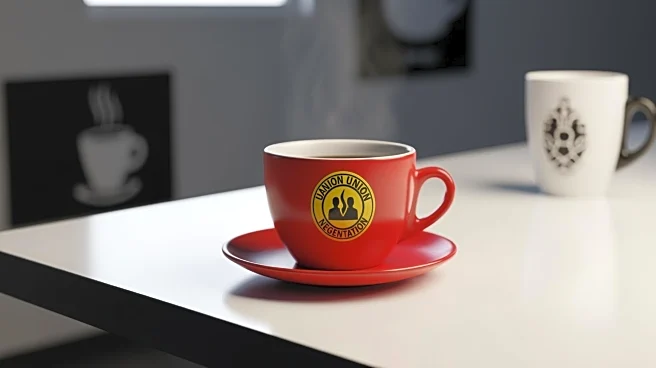What's Happening?
Unionized Starbucks baristas have overwhelmingly voted to authorize a strike if the company does not make new proposals or show progress in contract negotiations. The vote, approved by 92% of participating
members, comes after six months of stalled talks regarding workers' pay and staffing concerns. Starbucks Workers United, representing 12,000 workers at approximately 650 coffee shops, has indicated that baristas are prepared to strike in over 25 cities if a contract is not finalized by November 13. The union accuses Starbucks of failing to offer new proposals, while the company blames the union for walking away from negotiations. Starbucks maintains that it offers competitive pay and benefits, and that the union's demands are unrealistic.
Why It's Important?
The potential strike by Starbucks baristas highlights ongoing labor tensions within the company, which could impact its operations, especially during the crucial holiday season. With unionized workers representing a small fraction of Starbucks' U.S. workforce, the strike could still disrupt service in key locations. The situation underscores broader labor movements across the U.S., where workers are increasingly demanding better pay and working conditions. The outcome of this standoff could influence labor relations in the retail and service industries, setting precedents for future negotiations. Starbucks' response and the union's actions will be closely watched by other companies and labor organizations.
What's Next?
If Starbucks does not address the union's demands by November 13, a strike could commence, affecting operations in multiple cities. The company has expressed readiness to return to negotiations, but the union's demands for significant pay increases and changes in store operations remain contentious. The resolution of this conflict may involve federal mediators, as previous attempts at mediation have not yielded significant progress. The outcome could influence Starbucks' business strategy and labor policies, as well as impact its public image and customer satisfaction during a peak sales period.











